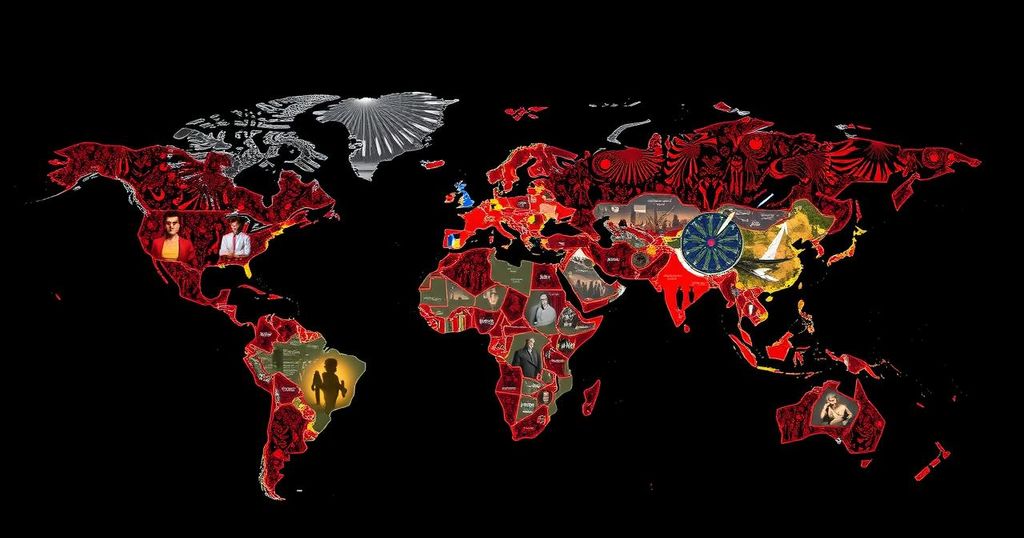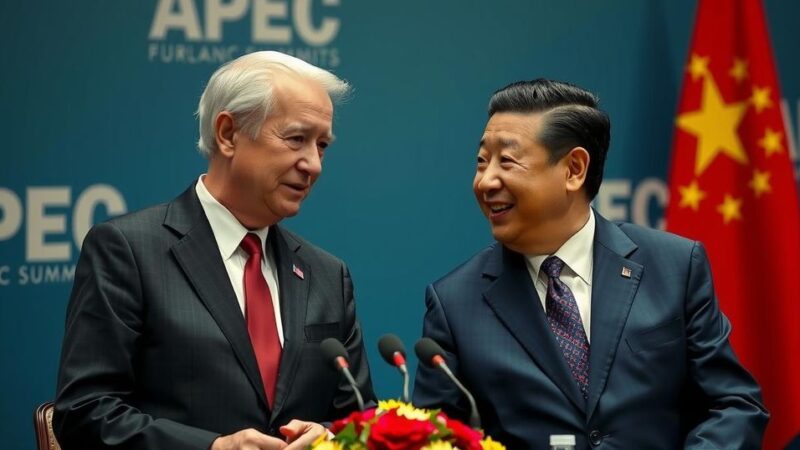Typhoon Toraji has made landfall in northeastern Aurora, prompting mass evacuations and emergency responses amid fears of flash floods and landslides. President Ferdinand Marcos Jr. has prioritized disaster relief efforts over attending an international summit, while military and local authorities are mobilized to assist affected residents. This year’s typhoons have overwhelmed the region, causing over 160 deaths and extensive damage, necessitating foreign aid to support recovery efforts.
Typhoon Toraji has struck the northeastern province of Aurora in the Philippines, with predicted winds reaching up to 130 kilometers per hour (81 mph) and gusts peaking at 180 kph (112 mph). Following landfall on Monday morning, the typhoon is projected to move northwest across Luzon, gradually weakening as it traverses mountainous terrain before proceeding to the South China Sea. In anticipation of severe weather, Interior Secretary Jonvic Remulla has mandated the evacuation of residents from 2,500 villages, emphasizing the increased risk of flash floods and landslides in the rain-saturated regions.
President Ferdinand Marcos Jr. deferred his attendance at the Asia-Pacific Cooperation forum in Peru to oversee disaster recovery efforts in areas impacted by recent storms. He had inspected damages in Cagayan and Ilocos provinces the day before the typhoon hit. Military disaster-response units have been deployed to vulnerable areas, prepared for further developments as the situation unfolds. Furthermore, schools have closed and transportation services, including inter-island ferries and domestic flights, have been suspended in regions affected by the storm.
This year, the Philippines has grappled with 14 typhoons, and the cumulative effect of the last three storms has resulted in over 160 fatalities, extensive damage to infrastructures, and displacement of more than nine million individuals. Given the scale of the disaster, aid has been received from several nations, including Singapore and the United States, to provide much-needed assistance to the hardest-hit northern provinces.
The Philippines is frequently exposed to typhoons, especially during the monsoon season, resulting in significant humanitarian challenges. Typhoon Toraji, locally known as Nika, is the 14th notable disturbance this year, reflecting the nation’s ongoing battle against severe weather events. The government’s proactive response to evacuate vulnerable populations illustrates their commitment to safeguarding residents, particularly in areas prone to natural disasters. Recent storms have severely impacted the region, emphasizing the importance of continuous international cooperation for disaster relief and recovery.
The arrival of Typhoon Toraji highlights the ongoing struggle faced by the Philippines in combating natural disasters, further exacerbated by the previous storms this year. With significant fatalities and displacement reported, government and military efforts are focused on evacuating high-risk areas and providing aid to affected populations. The situation underscores the necessity for regional collaboration in disaster response, as the Philippines continues to receive support from neighboring countries and allies in its recovery efforts.
Original Source: www.mid-day.com




